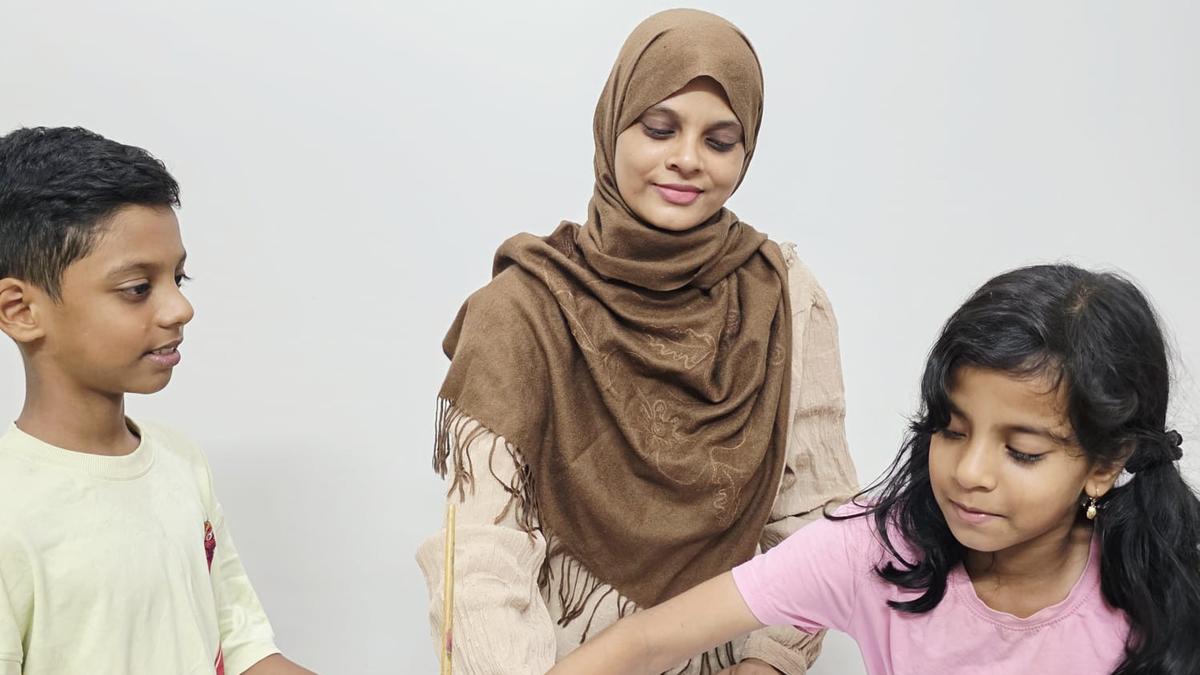Sana Rezwan began collecting art while running an art marketing agency in New York. She may not have realised it then, but the many hats she’d worn in her life till then — establishing Indelust, a platform to source ethical fashion from India and Pakistan; sitting on the Advisory Arts Council of Harvard University’s South Asia Institute and as a patron of The Metropolitan Museum of Art; coupled with her experience as a senior director in her family business — were all training for her most ambitious venture yet.

Sana Rezwan
In 2022, she established the Public Arts Trust of India (PATI), a non-profit that focused on cultural projects across the country. PATI’s flagship ventures, the Jaipur Art Week and the Jodhpur Art Week, are now annual events. Together with her team, Rezwan curates a considered blend of site-specific installations, exhibitions and performances that bring enchantment to everyday public spaces. Government schools, neglected public parks and traditional architectural structures such as stepwells become art sites.
Who is it for? Everyone. The recently concluded Jodhpur Arts Week drew over 100,000 visitors across 10 public venues. With international senior artists such as Chila Kumari Singh dialoguing with traditional architecture and young talents like Sarahu Kilaru and Aku Zeliang pondering on the possibilities of craft and expression, this edition — inspired by ‘Hath Ro Hunar’ (meaning ‘skill of the hand’ in Marwari) — exemplifies Rezwan’s powerful vision for democratising art.

Theo Pinto’s Eastern Gates represents an ephemeral sunset
Edited excerpts from an interview:
Tell us about PATI. It’s intriguing that it includes the word ‘public’ — a clear indicator of its vision.
At its core, PATI is an experiment in decentralisation. We aim to shift the locus of cultural attention away from the traditional centres of power and visibility, and instead build platforms where regional narratives, artisanal practices, and contemporary interventions intersect. Our vision is one of inclusivity and keeping the ‘public’ at its heart — not simply in terms of audience reach, but in terms of whose voices, histories, and modes of making are brought into dialogue with one another.
Importantly, this vision is not confined to episodic festivals. Through the year, PATI runs a Creative Arts Education Programme across five government schools in Jodhpur, supported by a fellowship model that embeds young educators into classrooms. Parallelly, our ambassador programme offers internships for high-school students who are eager to expand their knowledge of art and its wider social resonances. These year-round initiatives are central to our ethos: they ensure that public art is not just encountered as spectacle, but integrated into the everyday life of the city.

The Living Museum, a collection of objects — from antique markets and personal collections — represents Jodhpur’s cultural history

Dhaqan Collective’s Nomadic Echoes celebrates the nomadic communities
What led to the idea of creating an art week in Jodhpur?
I wanted sustained engagement, so the idea of an art week was less about producing a festival and more about generating a framework for this. Jodhpur, with its layered architectural fabric and living craft traditions, offered a particularly fertile ground. The project is not merely an event but a proposition: how contemporary artistic practice might resonate within a city where heritage is not static but continually negotiated?

Aku Zeliang’s installation of Huh Tu vessels displayed near the Toorji ka Jhalra honours Rajasthan and Nagaland

Zavier Wong Zhen Rui reimagines the screen
Why Jodhpur?
It embodies a continuum of cultural production — from the artisanal to the monumental. It is a city where stone carving, dyeing, and metalwork co-exist with the fortresses and palaces that dominate its skyline. To me, Jodhpur represents both resilience and imagination. Importantly, it also exemplifies the possibility of decentralisation: an insistence that world-class cultural programming can — and should — take place outside metropolitan capitals.

Aphra Shemza’s shemza.digital #17 creates a modern jali with UV lighting
With artists like Ayesha Singh and Chila Kumari Burman a part of the programme, how is Jodhpur Art Week creating space for women’s voices and stories within the wider art narrative?
Foregrounding women artists is not a curatorial afterthought but a structural necessity. Artists such as Ayesha Singh and Chila Kumari Burman interrogate power, patriarchy, and identity through divergent aesthetic strategies — Singh through architectural interventions that expose hidden hierarchies, Burman through a neon-saturated iconography that reclaims visibility. By positioning such practices at the heart of the art week, we aim to unsettle inherited narratives and open space for feminist imaginaries to shape the discourse of contemporary art in India.

Chila Kumari Burman’s neon-saturated iconography

Saruha Kilaru’s installation of hand-flameworked desert plants in glass orbs also pays tribute to Gulab Rai
What steps are being taken to make Jodhpur Art Week accessible and engaging for audiences?
Accessibility operates on multiple registers. Spatially, our decision to embed projects within stepwells, gardens, and public courtyards ensures that the city itself becomes the exhibition site. Our outreach with schools and artisans situates learning and participation at the centre of the festival. The education and ambassador programmes also build bridges of familiarity, ensuring that the festival is not experienced as a temporary imposition but as part of an ongoing civic dialogue. Internationally, collaborations with institutions such as the Institut Français and the British Council extend our conversations beyond national borders. Accessibility, then, is not only about removing barriers to entry, but about constructing an ethos of shared ownership.
The interviewer is the founder-director of Eka Archiving Services.

 2 hours ago
1
2 hours ago
1






















 English (US) ·
English (US) ·